03.09.2019
The multiple temporalities and spatialities of the new generation of Greek artists
Visual arts
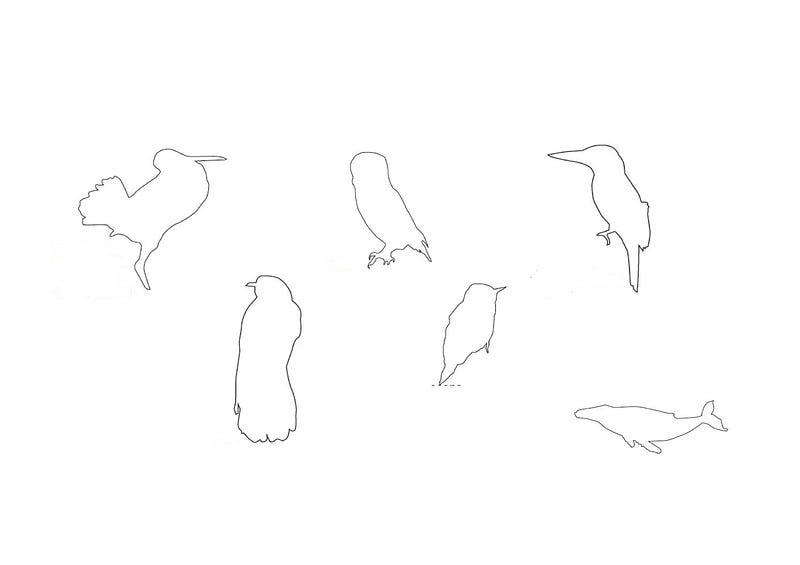
An art scene is determined by characteristics relating to place and time. Smaller or larger geographic zones and references to decades or eras are used to describe the activity of visual artists within specific spatial and temporal limits. Although the focus on the artistic activity of major metropolitan centres may be constant, most other cities and regions find themselves at the centre of attention at times of major social, economic or political change. As it is known, this was the case with Athens during the recession. Earlier in this decade, domestic and international organisations, scholars and curators wished to provide a theoretical framework to the work of an emerging generation of Greek artists, to showcase it and study its subject matter its media and its preoccupations. With exhibitions, articles and books they attempted to chart what is burgeoning in the face of socioeconomic adversity and to identify any common attributes and references.
The need to identify such commonalities or affinities seemed natural in each of these initiatives, as one finds by consulting the curatorial texts for events of this type. The 2013 exhibition Afresh of the National Museum of Contemporary Art, for example, aimed at showcasing the “new differentiating elements” and the “unique artistic dynamics” of a young generation that works despite the fact that “possibilities and opportunities are shrinking” (Dragona, Pandi,Vitali, 2013). The selection of works reflected “a pluralism of artistic practices” and means” and in particular “it signals afresh” their approach and utilisation (ibid.), and stressed the interdisciplinary approach of several practitioners and this new generation’s strong focus on “research, cooperation and the exchange of information and knowledge”. Three years later, The Equilibrists exhibition of the New Museum and the DESTE Foundation at the Benaki Museum spoke of a group of artists” as part of an international ‘young precariat’” who, “amidst a climate of political and economic instability,” have “responded with a spirit of improvisation and cooperation” (Carrion-Murayari, Christoffersen, Gioni 2016). The title was chosen to convey the sense of balance and stability of a new generation that experiences a turbulent world. Examining the artists’ relation with materiality, the curators emphasised the experimentation, the metamorphoses and the absence of the homogeneity one might expect as a result of the commonly experienced precariousness as well as the uncertain and conflicting social and political views of the time (ibid.).
The common lived experience of a generation and the quest for its traits in the works of artists so as to convey the pulse of a period echoes Raymond Williams’s thinking. The “structures of feeling” or “structures of experience”, as he names them, which differ from one generation to the next, are first traced in the field of art and the creation of the active present (Williams 1977). Defying classification, boundaries and ideologies, they are ―in a way― emerging collective moods which, combined with spatialities and temporalities (Anderson 2014), have the potential to effect change. This approach seems to be reflected in the rationale of Documenta for its Athens event of 2017, which asserted that “the place and the time matter” and that the experience of a city between continents, cultures and multitudes can be invaluable at a time of major social challenges and transformations(Szymczyk 2017, 29). Indeed, as it was explicitly stated, Documenta was interested in Athens mainly as a living organism, a city that could represent other cities and places.
Yet what does it mean to describe, on the basis of the above, a generation according to the specific characteristics of an era in one country? How does it help or confine the artists to whom it refers? Having lived through a decade of economic recession, and currently experiencing increasingly stronger social, cultural and economic divisions globally, the emphasis on identifying the common traits of an artistic community or generation may leave room for misapprehensions or ambiguous approaches. Documenta, for instance, did not escape the danger of defining Athens and its communities, artistic and other, as the “other”, as something different that seeks an opportunity to fit in (Tramboulis 2017). At the same time, however, as E. Tsokanta (2019) points out about the Athenian art scene, no one can deny that Athens is a liminal space determined by economic, political and social conditions which art attempts to describe, evaluate and ultimately influence structurally. As she says, shared geography and a sense of locality cannot but be decisive.
The SNF Artist Fellowship Program of ARTWORKS, which started with a first cycle of monetary prizes in 2018, provides an opportunity for revisiting these issues. With several artists being rewarded for their work, the initiative aims to support and empower the artistic and generally creative community in Greece and particularly in Athens through meetings, presentations and debates among the grantee artists and curators, scholars and guests of the programme. The remainder of this paper discusses the role of locality and temporality and the key questions raised herein through the work of those participants of the programme who touch upon such matters.
Aiming to re-contextualise events that link the past and the present, the local and the global, Giannis Delagrammatikas seeks out the spaces where they occur. Places like open markets, international fairs or archaeological sites provide the setting for recounting and discussing stories and events. The artist presents selected archive material, texts, images and objects through which he demonstrates the actual or potential relations among individuals, objects, ideas and cultures. Delagrammatikas uses suspicion as a methodological tool to enable micro-revelations and turnarounds of reality. His recent work focuses specifically on the role of collective and political narratives. In plot hole_do what is fair!, golf as a sport serves as the starting point for discussing issues of inequality, exclusion and discrimination in contemporary reality. Seemingly unconnected events from Greece and beyond end up revealing points of conflict, contention and exploitation that recur and get transformed depending on the characteristics of the time.
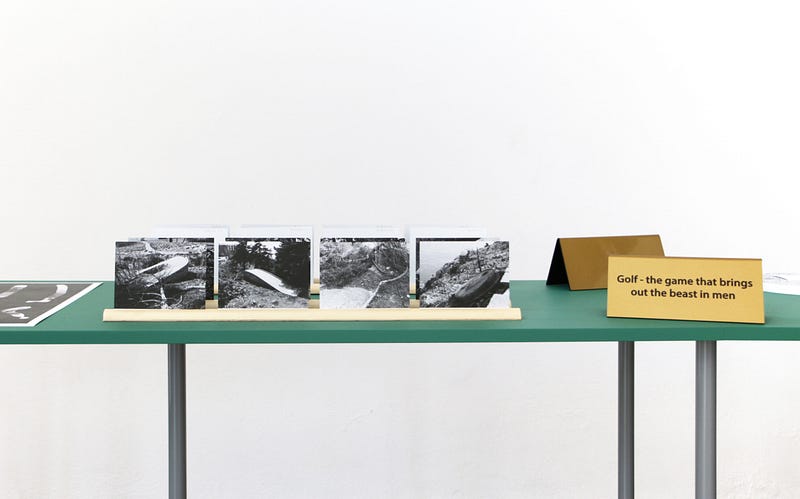
Paky Vlassopoulou is concerned about the socio-political situation of the place where an artwork is presented or for which it is produced. In recent years her work ―which combines a sculptural character with elements of performance― has been examining issues of care and hospitality in today’s world. Objects that form part of performative tasks are used to discuss forms of emotive or domestic labour that are invisible but essential for the smooth running of a society’s structures and infrastructures. The artist emphasises the need for them to be recognised, and points out the gender and class discriminations often associated with them. In her latest work, At your Service, Vlassopoulou explores these issues on the internet, where communication is automated and disembodied. What ways, then, remain to emerge or to be rediscovered to establish relationships and bring the voices and bodies together? Her artistic work and positioning brings to mind Fisher’s urgent call for “a movement that abolishes the present state of things, a movement that offers unconditional care without community”5 (Fisher 2015).
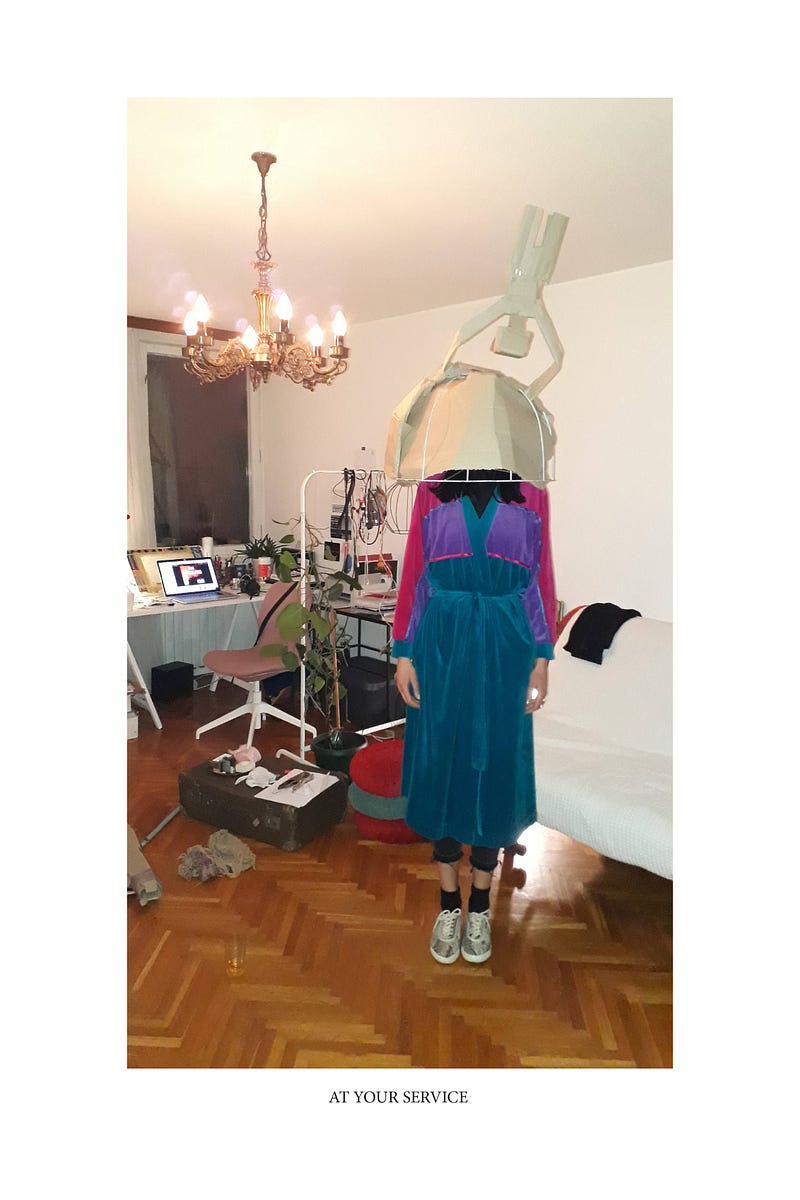
The space and time of the internet and the coexistence of heterogeneous information, symbols and images are clearly evident in the current work of Pavlos Tsakonas. Through unexpected encounters and syntheses, the artist questions the dipoles of religion and science, reason and emotion, art and nature, order and chaos. In a workin-progress inspired by the twelve zodiac signs of Western astrology he comments on the classification systems of human traits. His 12 paintings, one for each zodiac sign, comprise elements from different traditions, eras and cultures and appropriate the aesthetics of online communication as well as those of graphic design and advertising. Can we really avoid the limitations, categorisations and generalisations we tend to use in order to interpret the world? Can we defuse and enervate symbols and “constructs”? The questions posed by the work of Tsakonas seem more crucial than ever. The need for “living classifications” (Bowker & Leigh Start 2000, 326) in times of polarisation and controversy is urgent — which means a need for fluid categories capable of changing to facilitate shifts and transformations.
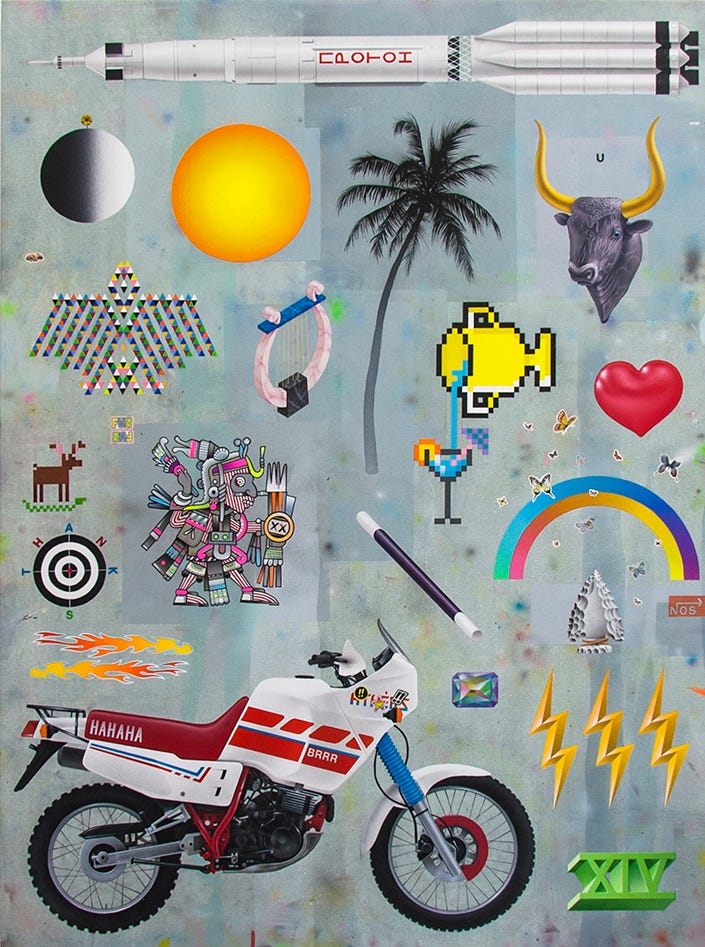
Kyriaki Goni focuses on locality or interlocality and the relations and communities enabled by modern technologies. Using methods of critical or hypothetical design, she narrates stories about future topologies and existing topographies. In recent years her research has centred on the networks of the Aegean Sea, among other things. In her latest work, Networks of Trust ―presented as an installation but with research and its activation on islands as an integral part of it― the prehistory of the Aegean archipelago becomes the springboard for discussing the pre-existing and necessary connections and forms of coexistence between both human and non-human elements such as the relations between future and past, civilisation and nature. Reminding us that the Mediterranean is a medium that both unites and divides, Goni points out the fragmented reality of the islands and the networks that kept them going. As she notes with reference to Glissant (2010), by thinking with the archipelago we have the ability to go beyond closed and rigid categories and turn to a future more open to difference and pluralism.
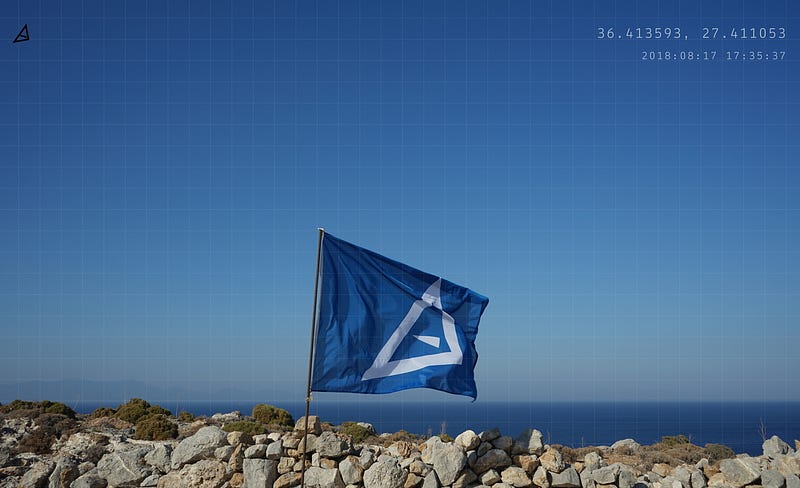
The region of the Mediterranean and specifically the island of Malta was the object of research and the venue for one of the recent projects of Kosmas Nikolaou. Choir and Manoeuvre (a guided tour to imaginary gardens) was created specifically for the gardens of Villa Bologna in 2018. Having studied the geography, the archaeology and the history of an oft-colonised island literally in the middle of the Mediterranean, the artist ―whose work explores spatial qualities, architectural structures and traces of memory― wanted to speak about Malta’s identity. A series of spatial interventions that Nikolaou designed at Villa Bologna were linked together with specially prepared guided tours which included various references and stories and hovered between myth and reality. The work was thus activated for the viewers through these performative actions of the guides, leaving room for mental associations, interpretations and correlations. For instance, specific birds which are endemic in Malta and the Mediterranean, are mentioned as a reference to colonialism, migration and the crossbreeding of civilisations.
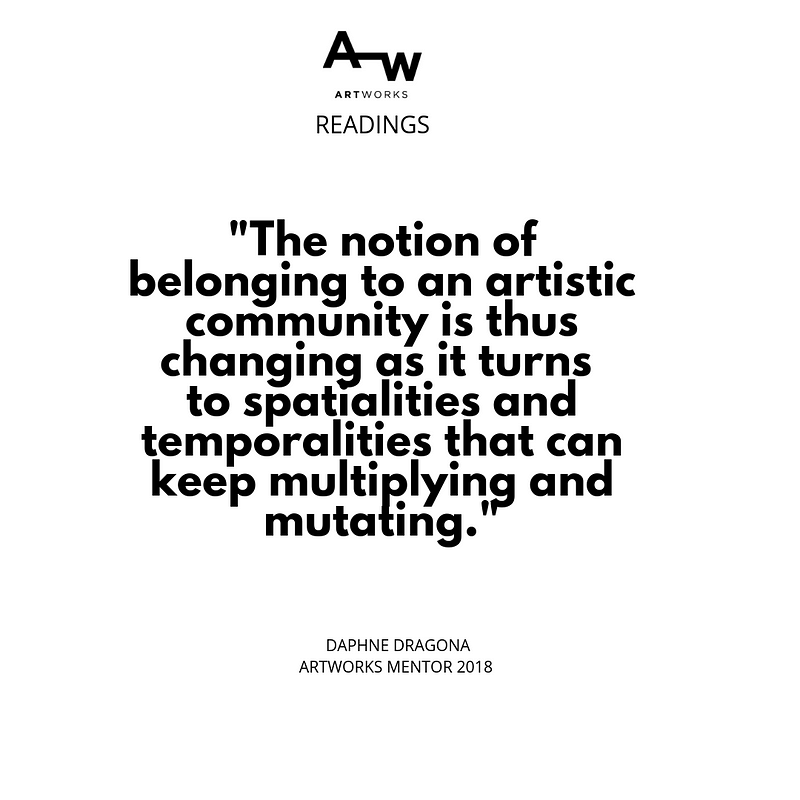
So are place ―Athens, and Greece― and time ―the years of the economic crisis― decisive for the new art scene, in view of the aforementioned examples? On the basis of these, the following points can be made. Locality plays a key role as a point of reference or departure. The socio-political conditions, possibilities and limitations discussed with reference to place. It is observed, however, that the emphasis is not particularly on Athens or Greece; on the contrary, place becomes the basis for correlations and connections between regions and cultures. Similarly, as far as time is concerned we find that different periods and temporalities come together to balance out and ultimately coexist. Past, present and future are brought close and are often deliberately confused so as to be redefined through their references and relations. The emphasis thus seems in all cases to be on the correlations and encounters. The works seem to wish to evade definitions and concrete descriptions, attempting instead to establish common or intermediary places which connect or encompass different worlds. In a time of oppositions, this new generation of artists turns to heterogeneous, open patterns capable of accommodating affective differences (Munoz 2000, 70) and allowing new connections and ways of coexistence. The notion of belonging to an artistic community is thus changing as it turns to spatialities and temporalities that can keep multiplying and mutating.
Daphne Dragona, ARTWORKS Mentor 2018 writes about ‘’The multiple temporalities and spatialities of the new generation of Greek artists’’. Daphne is a Berlin-based theorist and curator. She regularly contributes articles to journals, magazines and exhibition catalogues. Since 2015, she serves as the conference curator of Transmediale festival.



